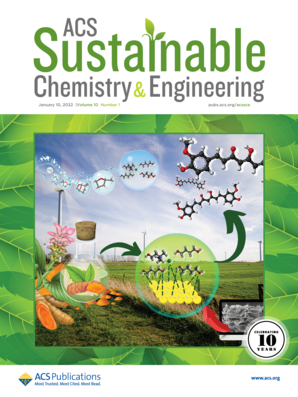Compositional Doping Induced the Suppression of Sluggish Na+ Diffusion for a Robust Pyrophosphate Cathode toward Exceptionally Long Cycle Life
IF 7.1
1区 化学
Q1 CHEMISTRY, MULTIDISCIPLINARY
引用次数: 0
Abstract
Polyanionic compounds are now viewed as attractive cathode materials for sodium-ion batteries (SIBs), which could be utilized broadly in large-scale energy storage equipment, especially for grid application, due to their high safety and outstanding thermal stability upon long-term cycling. Fe-based polyanionic compounds, especially Na2FeP2O7, are considered promising cathode materials due to the benefits of polyanionic compounds and the further advantage of earth-abundant Fe elements, which can lead to a low cost that facilitates the scaling of the sodium-ion industry. However, issues such as low electronic conductivity and poor cyclic durability, especially under high current density, remain substantial barriers that hinder their wide application. Herein, a carbon-coated Mg- and Ti-codoped Na2Fe0.95(MgTi)0.05P2O7 cathode material is prepared, with significantly improved rate ability and cycling performance ascribed to the synergistic effect of the compositional doping strategy. Electrochemical tests show that Na2Fe0.95(MgTi)0.05P2O7 exhibits exceptionally long cycle life at a high current density of 20C with 80.93% capacity retention after 30,000 cycles. In situ XRD and X-ray absorption fine structure (XAFS) spectra disclose that Mg and Ti codoping could effectively stabilize the structure with mere lattice distortion and the barely changed local structure environment during Na extraction/insertion, thus leading to the noteworthy ultralong cycle life. A theoretical study using the DFT calculation method demonstrates that the remarkable electrochemical property can be attributed to the large improvement of the conductivity and dramatic reduction of Na+ diffusion barriers for Na2Fe0.95(MgTi)0.05P2O7. This study provides insightful perspectives on material design for polyanionic compounds and also inspires an innovative approach for the improvement of high-performance SIB cathode materials.

成分掺杂诱导抑制Na+缓慢扩散的鲁棒焦磷酸盐阴极,以获得超长的循环寿命
目前,聚阴离子化合物被视为钠离子电池(sib)极具吸引力的正极材料,由于其高安全性和长期循环时出色的热稳定性,可广泛用于大型储能设备,特别是电网应用。铁基多阴离子化合物,特别是Na2FeP2O7,被认为是有前途的正极材料,因为多阴离子化合物的优点和地球上丰富的铁元素的进一步优势,可以导致低成本,促进钠离子工业的规模化。然而,诸如低电子导电性和循环耐久性差等问题,特别是在高电流密度下,仍然是阻碍其广泛应用的实质性障碍。本文制备了碳包覆Mg和ti共掺杂的Na2Fe0.95(MgTi)0.05P2O7正极材料,由于组分掺杂策略的协同作用,其速率能力和循环性能显著提高。电化学测试表明,Na2Fe0.95(MgTi)0.05P2O7在20C的高电流密度下具有超长的循环寿命,3万次循环后容量保持率为80.93%。原位XRD和x射线吸收精细结构(XAFS)光谱表明,Mg和Ti共掺杂可以有效地稳定结构,在Na提取/插入过程中晶格畸变很小,局部结构环境几乎没有改变,从而导致显著的超长循环寿命。利用DFT计算方法进行的理论研究表明,Na2Fe0.95(MgTi)0.05P2O7的电导率大幅提高,Na+扩散势垒大幅降低是其显著的电化学性能的原因。本研究为聚阴离子化合物的材料设计提供了深刻的见解,也为高性能SIB正极材料的改进提供了创新途径。
本文章由计算机程序翻译,如有差异,请以英文原文为准。
求助全文
约1分钟内获得全文
求助全文
来源期刊

ACS Sustainable Chemistry & Engineering
CHEMISTRY, MULTIDISCIPLINARY-ENGINEERING, CHEMICAL
CiteScore
13.80
自引率
4.80%
发文量
1470
审稿时长
1.7 months
期刊介绍:
ACS Sustainable Chemistry & Engineering is a prestigious weekly peer-reviewed scientific journal published by the American Chemical Society. Dedicated to advancing the principles of green chemistry and green engineering, it covers a wide array of research topics including green chemistry, green engineering, biomass, alternative energy, and life cycle assessment.
The journal welcomes submissions in various formats, including Letters, Articles, Features, and Perspectives (Reviews), that address the challenges of sustainability in the chemical enterprise and contribute to the advancement of sustainable practices. Join us in shaping the future of sustainable chemistry and engineering.
 求助内容:
求助内容: 应助结果提醒方式:
应助结果提醒方式:


